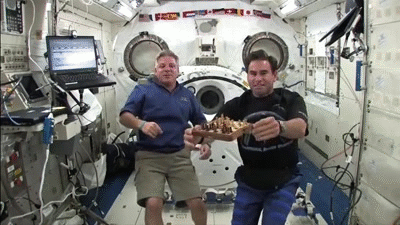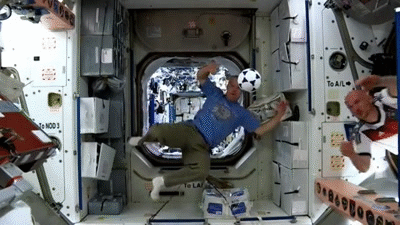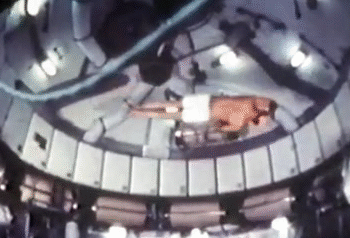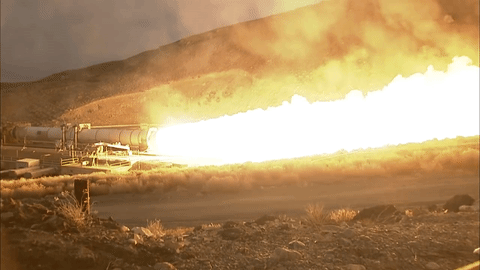Solar System: 5 Things To Know This Week
Solar System: 5 Things to Know This Week
Our solar system is huge, so let us break it down for you. Here are 5 things to know this week:
1. It’s Lunacy, Whether by Day or Night

What’s Up in the night sky during November? See all the phases of the moon by day and by night, and learn how to look for the Apollo landing sites. Just after sunset on November 13 and 14, look near the setting sun in the western sky to see the moon as a slender crescent. For more, catch the latest edition of the monthly “What’s Up” Tumblr breakdown.
2. Answer to Longstanding Mars Mystery is Blowin’ in the Wind

What transformed Mars from a warm and wet environment, one that might have supported surface life, to the cold, arid planet it is today? Data from our Mars Atmosphere and Volatile Evolution (MAVEN) mission pins much of the blame on the sun. Streams of charged solar particles crash against the Martian atmosphere, and without much of a magnetic field there to deflect the onslaught, over time the solar wind has stripped the air away.
3. Orbital Maneuvers in the Dark

The New Horizons mission team has set a new record. They recently performed the last in a series of trajectory changes that set the spacecraft on a course for an encounter with a Kuiper Belt object in January 2019. The Kuiper Belt consists of small bodies that orbit the sun a billion miles or more beyond Pluto. These latest course maneuvers were the most distant trajectory corrections ever performed by any spacecraft.
4. Visit Venus (But Not Really — You’d Fry)

Mars isn’t the only available destination. You can visit all the planets, moons and small worlds of the solar system anytime, right from your computer or handheld device. Just peruse our planets page, where you’ll find everything from basic facts about each body to the latest pictures and discoveries. Visit Venus HERE.
5. Titan Then and Now

Nov. 12 marks the 35th anniversary of Voyager 1’s Saturn flyby in 1980. Voyager saw Saturn’s enshrouded, planet-sized moon Titan as a featureless ball. In recent years, the Cassini mission haas revealed Titan in detail as a complex world. The spacecraft has peered beneath its clouds, and even delivered a probe to its encounter, which will include infrared scans, as well as using visible light cameras to look for methane clouds in the atmosphere.
Make sure to follow us on Tumblr for your regular dose of space: http://nasa.tumblr.com
More Posts from Nasa and Others
Hi Mr Neeley, thank you for answering questions! I’ve got two things I want to know- how does the cockpit differ form a normal one? Are there special instruments in there? And do you get tired in long flights? What sort of system is in place to make sure you get sufficient rest if you are flying 12+ hours?
What’s Up for January?

A meteor shower, a binocular comet and the winter circle of stars. Here are the details:
Quadrantid Meteor Shower

The Quadrantid meteor shower on Jan. 4 will either sizzle or fizzle for observers in the U.S. The shower may favor the U.S. or it could favor Europe depending on which prediction turns out to be correct. For viewing in the United States, observers should start at 3 a.m. EST. The peak should last about two hours with rates of 120 meteors per hour predicted in areas with a dark sky.
Comet Catalina

In the middle of the month, midnight to predawn will be primetime for viewing Comet Catalina. It should be visible with binoculars if you have a dark sky, but a telescope would be ideal. Between the 14th and 17th the comet will pass by two stunning galaxies: M51, the whirlpool galaxy and M101, a fainter spiral galaxy.
Constellation Orion

Winter is also the best time to view the constellation Orion in the southeastern sky. Even in the city, you’ll see that it’s stars have different colors. Not telescope needed, just look up a few hours after sunset! The colorful stars of Orion are part of the winter circle of stars.
Make sure to follow us on Tumblr for your regular dose of space: http://nasa.tumblr.com
4 people are living in an isolated habitat for 30 days. Why? Science!
This 30 day mission will help our researchers learn how isolation and close quarters affect individual and group behavior. This study at our Johnson Space Center prepares us for long duration space missions, like a trip to an asteroid or even to Mars.

The Human Research Exploration Analog (HERA) that the crew members will be living in is one compact, science-making house. But unlike in a normal house, these inhabitants won't go outside for 30 days. Their communication with the rest of planet Earth will also be very limited, and they won’t have any access to internet. So no checking social media kids!
The only people they will talk with regularly are mission control and each other.

The crew member selection process is based on a number of criteria, including the same criteria for astronaut selection.
What will they be doing?
Because this mission simulates a 715-day journey to a Near-Earth asteroid, the four crew members will complete activities similar to what would happen during an outbound transit, on location at the asteroid, and the return transit phases of a mission (just in a bit of an accelerated timeframe). This simulation means that even when communicating with mission control, there will be a delay on all communications ranging from 1 to 10 minutes each way. The crew will also perform virtual spacewalk missions once they reach their destination, where they will inspect the asteroid and collect samples from it.
A few other details:
The crew follows a timeline that is similar to one used for the ISS crew.
They work 16 hours a day, Monday through Friday. This includes time for daily planning, conferences, meals and exercises.
They will be growing and taking care of plants and brine shrimp, which they will analyze and document.
But beware! While we do all we can to avoid crises during missions, crews need to be able to respond in the event of an emergency. The HERA crew will conduct a couple of emergency scenario simulations, including one that will require them to maneuver through a debris field during the Earth-bound phase of the mission.

Throughout the mission, researchers will gather information about cohabitation, teamwork, team cohesion, mood, performance and overall well-being. The crew members will be tracked by numerous devices that each capture different types of data.

Past HERA crew members wore a sensor that recorded heart rate, distance, motion and sound intensity. When crew members were working together, the sensor would also record their proximity as well, helping investigators learn about team cohesion.
Researchers also learned about how crew members react to stress by recording and analyzing verbal interactions and by analyzing “markers” in blood and saliva samples.

In total, this mission will include 19 individual investigations across key human research elements. From psychological to physiological experiments, the crew members will help prepare us for future missions.
UPDATE:
Mission success! After a simulated mission to an asteroid, the crew “splashed down” around 10:30 p.m. EST on Wednesday, Feb. 24 and exited the habitat for the first time in 30 days.
Want a full, 360 degree look at HERA? Check out and explore the inside of the habitat.
Make sure to follow us on Tumblr for your regular dose of space: http://nasa.tumblr.com
What is a typical day in the international space station like?? I cant help but express my admiration for you.
7 Sports Astronauts Love Without Gravity (Including Football)
Astronauts onboard the International Space Station spend most of their time doing science, exercising and maintaining the station. But they still have time to shoot hoops and toss around a football.
From chess to soccer, there’s a zero-gravity spin to everything.
1. Baseball



Baseball: America’s favorite pastime. JAXA astronaut, Satoshi Furukawa shows us how microgravity makes it possible to be a one-man team. It would be a lot harder to hit home runs if the players could jump that high to catch the ball.
2. Chess

Yes, it’s a sport, and one time NASA astronaut Greg Chamitoff (right) played Earth on a Velcro chess board. An elementary school chess team would pick moves that everyone could vote for online. The winning move would be Earth’s play, and then Chamitoff would respond. About every two days, a move would be made. But who won the historic Earth vs. Space match? Earth! Chamitoff resigned after Earth turned its pawn into a queen, but it was game well played.
3. Soccer


NASA astronaut Steve Swanson put a new spin on soccer by juggling the ball upside down. However, he might not have considered himself upside down. On the space station, up and down are relative.
4. Gymnastics

NASA astronauts usually sign off their videos with a zero-gravity somersault (either forwards or backwards). But astronauts are also proficient in handstands, flips and twists. The predecessor to the International Space Station, the Skylab, had the best space for the moves. The current space station is a bit tight in comparison.
5. Basketball

Objects that aren’t heavy don’t move very well on the space station. They kind of just float. It’s like Earth, but exaggerated. For example, on Earth a beach ball wouldn’t go as far as a basketball. The same is true in space, which is why playing with a basketball in space is more fun than playing with a beach ball.
6. Golf

People talk about hitting golf balls off skyscrapers, but what about off the International Space Station? While golf isn’t a normal occurrence on the station, it’s been there. One golf company even sent an experiment to the station to find out how to make better golf clubs.
7. Football

Zero gravity doesn’t make everything easier. Astronauts need to relearn how to throw things because their brains need to relearn how to interpret sensory information. A bowling ball on the space station no longer feels as heavy as a bowling ball on Earth. When astronauts first throw things on the space station, everything keeps going too high. That would put a wrench in your spiral for a couple of months. But once you adjust, the perfect spiral will just keep spiraling!
Make sure to follow us on Tumblr for your regular dose of space: http://nasa.tumblr.com

The Space Shuttle Challenger landed #OTD in 1983.
Here are astronauts Richard Truly & Guion Bluford of Space Transport System 8 (STS-8) grabbing some shut-eye before the wrap up of their mission. This mission had:
The first African American, Guion Bluford, to fly in space
The first night launch and landing during the Space Shuttle Program
Make sure to follow us on Tumblr for your regular dose of space: http://nasa.tumblr.com
Solar System: Things to Know This Week
There’s even more to Mars.

1. Batten Down the Hatches
Good news for future astronauts: scientists are closer to being able to predict when global dust storms will strike the Red Planet. The winds there don't carry nearly the same force that was shown in the movie "The Martian," but the dust lofted by storms can still wreak havoc on people and machines, as well as reduce available solar energy. Recent studies indicate a big storm may be brewing during the next few months.
+ Get the full forecast

2. Where No Rover Has Gone Before
Our Opportunity Mars rover will drive down an ancient gully that may have been carved by liquid water. Several spacecraft at Mars have observed such channels from a distance, but this will be the first up-close exploration. Opportunity will also, for the first time, enter the interior of Endeavour Crater, where it has worked for the last five years. All this is part of a two-year extended mission that began Oct. 1, the latest in a series of extensions going back to the end of Opportunity's prime mission in April 2004. Opportunity landed on Mars in January of that year, on a mission planned to last 90 Martian days (92.4 Earth days). More than 12 Earth years later, it's still rolling.
+ Follow along + See other recent pictures from Endeavour Crater

3. An Uphill Climb
Opportunity isn't the only NASA Mars rover getting a mission extension. On the other side of the planet, the Curiosity rover is driving and collecting samples amid some of the most scenic landscapes ever visited on Mars. Curiosity's two-year mission extension also began Oct. 1. It's driving toward uphill destinations, including a ridge capped with material rich in the iron-oxide mineral hematite, about a mile-and-a-half (two-and-a-half kilometers) ahead. Beyond that, there's an exposure of clay-rich bedrock. These are key exploration sites on lower Mount Sharp, which is a layered, Mount-Rainier-size mound where Curiosity is investigating evidence of ancient, water-rich environments that contrast with the harsh, dry conditions on the surface of Mars today.
+ Learn more

4. Keep a Sharp Lookout
Meanwhile, the Mars Reconnaissance Orbiter continues its watch on the Red Planet from above. The mission team has just released a massive new collection of super-high-resolution images of the Martian surface.
+ Take a look

5. 20/20 Vision for the 2020 Rover
In the year 2020, Opportunity and Curiosity will be joined by a new mobile laboratory on Mars. In the past week, we tested new "eyes" for that mission. The Mars 2020 rover's Lander Vision System helped guide the rocket to a precise landing at a predesignated target. The system can direct the craft toward a safe landing at its primary target site or divert touchdown toward better terrain if there are hazards in the approaching target area.
+ Get details
Discover the full list of 10 things to know about our solar system this week HERE.
Make sure to follow us on Tumblr for your regular dose of space: http://nasa.tumblr.com

Commander Callie Continues Moon Mission in NASA’s Second Graphic Novel
You followed fictional astronaut, Callie Rodriguez, on her journey to the Moon in our First Woman graphic novel, “Issue No. 1: From Dream to Reality.”
In the brand new “Issue No. 2: Expanding our Universe,” find out how Callie and her robotic sidekick RT escape the lunar lava tunnel and what challenges await them on the lunar surface.
See Callie and her new crewmates work together as a team and navigate the unexpected as they take on a challenging mission to deploy a next-generation telescope on the far side of the Moon. Now available digitally in English at nasa.gov/CallieFirst and in Spanish at nasa.gov/PrimeraMujer!
Along with the new chapter, the First Woman app – available in the Apple and Google Play stores – has been updated with new immersive, extended reality content. Explore the lunar surface and learn about the real technologies we’re building to make living and working on the Moon – and eventually, Mars – possible.
Make sure to follow us on Tumblr for your regular dose of space!
Four Cool Facts About Our New Rocket’s Booster Test Firing
The countdown to our last full-scale test firing of NASA’s Space Launch System (SLS) solid rocket boosters has begun (mark your calendars: June 28, 8:05 a.m. MDT [local time] 10:05 a.m. EDT). SLS is NASA’s new rocket that can go to deep space destinations, and this test is one more step on our Journey to Mars. This test will be broadcast live on NASA TV and our Facebook page. For those watching at home or work, here are four cool things that might not be so obvious on the screen.
1. So Hot, It Turns Sand Into Glass

With expanding gases and flames exiting the nozzle at speeds in excess of Mach 3 and temperatures reaching 3,700 degrees Fahrenheit, say goodbye to some of the sand at Orbital ATK’s test facility in the Utah desert because after the test, the sand at the aft, or rear, end of the booster motor will be glass.
2. This Motor’s Chill

This motor has been chilling — literally, down to 40 degrees — since the first week in May in Orbital ATK’s “booster house,” a special building on rails that moves to enclose the booster and rolls back so the motor can be test-fired. Even though SLS will launch from the normally balmy Kennedy Space Center in Florida, temperatures can vary there and engineers need to be sure the booster will perform as expected whether the propellant inside the motor is 40 degrees or 90 degrees (the temperature of the propellant during the first full-scale test, Qualification Motor 1 or QM-1).
3. This Booster’s on Lockdown

If you happen to be near Promontory, Utah, on June 28, you can view the test for yourself in the public viewing area off State Route 83. And don’t worry, this booster’s not going anywhere — engineers have it locked down. The motor is held securely in place by Orbital ATK’s T-97 test stand. During the test, the motor will push against a forward thrust block with more than three million pounds of force. Holding down the rocket motor is more than 13 million pounds of concrete — most of which is underground. The test stand contains a system of load cells that enable engineers to measure the thrust the motor produces and verify their predictions.
4. Next Time, It’s For Real

These solid rocket boosters are the largest and most powerful ever built for flight. They’ve been tested and retested in both full-scale and smaller subsystem-level tests, and vital parts like the nozzle, insulation and avionics control systems have been upgraded and revamped. Most of this work was necessary because, plainly put, SLS needs bigger boosters. Bigger boosters mean bolder missions – like around the moon during the first integrated mission of SLS and Orion. So the next time we see these solid rocket motors fire, they will be propelling SLS off the launch pad at Kennedy Space Center and on its first flight with NASA’s Orion spacecraft. For real.
The United Launch Alliance’s Atlas V rocket carrying the Orbital ATK Cygnus module rolls to Cape Canaveral Air Force Station's Launch Pad 41 in this time-lapse video. The rollout is in preparation for the Orbital ATK CRS-7 mission to deliver supplies to the International Space Station.
Launch is currently scheduled for 11:11 a.m. EDT, watch live coverage: http://www.nasa.gov/live
Make sure to follow us on Tumblr for your regular dose of space: http://nasa.tumblr.com
-
 naotaro liked this · 4 years ago
naotaro liked this · 4 years ago -
 megaradcollectionwolfthings-blog liked this · 9 years ago
megaradcollectionwolfthings-blog liked this · 9 years ago -
 moonlitvisionary liked this · 9 years ago
moonlitvisionary liked this · 9 years ago -
 fullmetalvalchemist liked this · 9 years ago
fullmetalvalchemist liked this · 9 years ago -
 anaglyph-anemoia liked this · 9 years ago
anaglyph-anemoia liked this · 9 years ago -
 myownzodiac liked this · 9 years ago
myownzodiac liked this · 9 years ago -
 lldrnkgns liked this · 9 years ago
lldrnkgns liked this · 9 years ago -
 sexymermaidspock liked this · 9 years ago
sexymermaidspock liked this · 9 years ago -
 camikazo liked this · 9 years ago
camikazo liked this · 9 years ago -
 acemex7 liked this · 9 years ago
acemex7 liked this · 9 years ago -
 beacon-hills-lacross-blog reblogged this · 9 years ago
beacon-hills-lacross-blog reblogged this · 9 years ago -
 sekhmets-laws liked this · 9 years ago
sekhmets-laws liked this · 9 years ago -
 sekhmets-laws reblogged this · 9 years ago
sekhmets-laws reblogged this · 9 years ago -
 crestfallenpixie liked this · 9 years ago
crestfallenpixie liked this · 9 years ago -
 pigeon-feet liked this · 9 years ago
pigeon-feet liked this · 9 years ago -
 wilted-pansies liked this · 9 years ago
wilted-pansies liked this · 9 years ago -
 wetcheetoaficionado reblogged this · 9 years ago
wetcheetoaficionado reblogged this · 9 years ago -
 2k17cashton liked this · 9 years ago
2k17cashton liked this · 9 years ago -
 ansuushkie0220 liked this · 9 years ago
ansuushkie0220 liked this · 9 years ago -
 parfaitstar reblogged this · 9 years ago
parfaitstar reblogged this · 9 years ago -
 parfaitstar liked this · 9 years ago
parfaitstar liked this · 9 years ago -
 videogamesandviagra-blog reblogged this · 9 years ago
videogamesandviagra-blog reblogged this · 9 years ago -
 noneconsistency liked this · 9 years ago
noneconsistency liked this · 9 years ago -
 uh-strology liked this · 9 years ago
uh-strology liked this · 9 years ago -
 disturbed-silence liked this · 9 years ago
disturbed-silence liked this · 9 years ago -
 11g liked this · 9 years ago
11g liked this · 9 years ago -
 linanlu liked this · 9 years ago
linanlu liked this · 9 years ago -
 harperhug reblogged this · 9 years ago
harperhug reblogged this · 9 years ago -
 wandering-xo liked this · 9 years ago
wandering-xo liked this · 9 years ago -
 starhasarrived reblogged this · 9 years ago
starhasarrived reblogged this · 9 years ago -
 sunshine-and-shitposts reblogged this · 9 years ago
sunshine-and-shitposts reblogged this · 9 years ago -
 tristanshoard reblogged this · 9 years ago
tristanshoard reblogged this · 9 years ago -
 kamenotaku liked this · 9 years ago
kamenotaku liked this · 9 years ago -
 snortgort reblogged this · 9 years ago
snortgort reblogged this · 9 years ago -
 snortgort liked this · 9 years ago
snortgort liked this · 9 years ago -
 spacecow2455 reblogged this · 9 years ago
spacecow2455 reblogged this · 9 years ago -
 cryptobotanical reblogged this · 9 years ago
cryptobotanical reblogged this · 9 years ago -
 stripmesoftly liked this · 9 years ago
stripmesoftly liked this · 9 years ago -
 subject-to-change42 liked this · 9 years ago
subject-to-change42 liked this · 9 years ago
Explore the universe and discover our home planet with the official NASA Tumblr account
1K posts